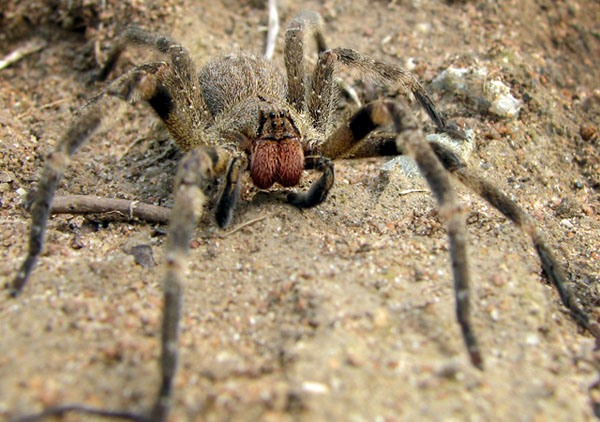Does the venomous nature of the Brazilian wandering spider scare you?
- Brazilian wandering spiders are a genus of arachnids, native to South America and Central America, and in particular, Brazil, where all species are present.
- ‘Brazilian wandering spiders’ are also known as ‘armed spiders’ and, along with some other spider species, ‘banana spiders’.
- The scientific name of the Brazilian wandering spider is Phoneutria and it is from the family Ctenidae, the family of wandering spiders.
- There are eight species of Brazilian wandering spiders, some of which are known for their high venom toxicity.
- Brazilian wandering spiders can grow to be 1.7 to 5 centimetres (0.7 to 2 inches) long, with a leg span of 10 to 18 centimetres (4 to 7 inches).
A Brazilian Wandering Spider
Image courtesy of Wikimedia Commons
- Hairs are evident on Brazilian wandering spiders, and the spider tends to be a mostly brown colour, sometimes with red near the fangs.
- For some years, the Brazilian wandering spider was listed as the spider being the most venomous on earth, by the Guinness World Records.
- Brazilian wandering spiders do not spin webs, instead they find dark locations to hide in, and when it is night time, they come out hunting for crickets and other insects, along with lizards and frogs.
- The venom of Brazilian wandering spiders can cause immense pain, the blocking of calcium absorption, inflammation, breathing issues, paralysis and muscle spasms, and even death if left untreated.
- Brazilian wandering spiders may reside on banana plants, and sometimes the fruit has been exported across the globe with a spider accompanying it.
Bibliography:
Brazilian Wandering Spider, 2016, Animal Corner, https://animalcorner.co.uk/animals/brazilian-wandering-spider/
Brazilian Wandering Spider, 2016, Wikipedia, https://en.wikipedia.org/wiki/Brazilian_wandering_spider
Phoneutria – introduction, 2013, Staatliches Museum für Naturkunde Karlsruhe, http://www.wandering-spiders.net/phoneutria/introduction/
Szalay J, Brazilian Wandering Spiders: Bites & Other Facts, 2014, Live Science, http://www.livescience.com/41591-brazilian-wandering-spiders.html







